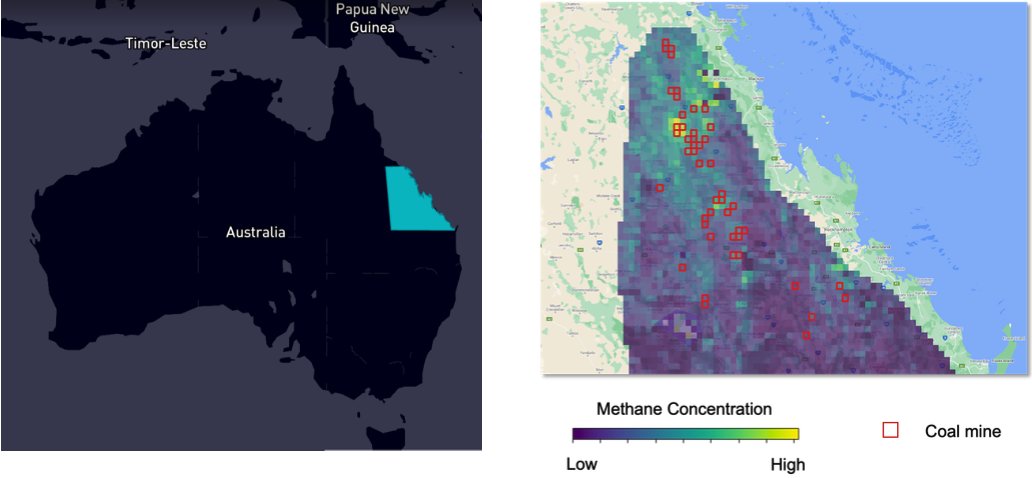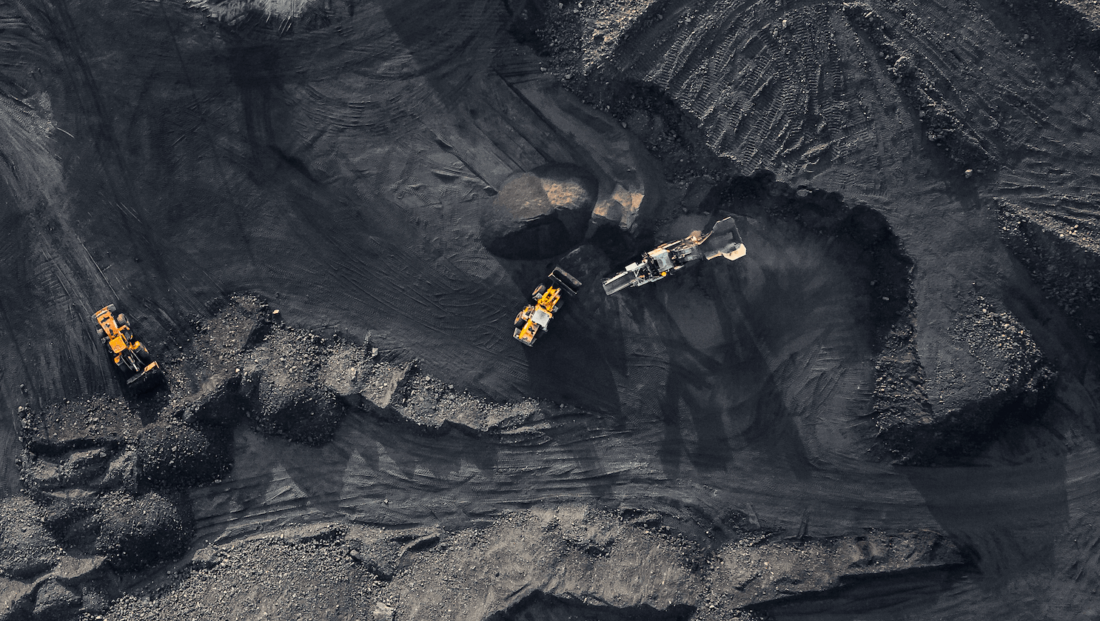Kayrros scientists measure an average 1.6 million tons of methane per year emitted from the basin’s coal mines
Executive Summary:
- The coal sector is well known for its carbon emissions, but generally overlooked as a major source of mostly avoidable methane emissions. Recent advances in satellite analytics, however, make it possible to accurately measure emissions from coal mining. In this note we quantify the methane footprint of the Bowen Basin in Australia, the top exporter of metallurgical coal in the world.
- Methane emissions from the Bowen Basin have the same impact on the climate as the carbon dioxide emissions of an entire mid-sized European country. The type of coal mined in the basin has a higher methane content than the global average, and the associated emissions increase the carbon footprint of end-use sectors such as steel and electricity by 26%.
- The techniques to reduce methane emissions are well known, and several mines in the Bowen Basin have implemented them on safety and economic grounds. With the right incentives, mitigation could be deployed in the Bowen Basin and around the world; in fact, eliminating methane emissions from coal is among the lowest hanging fruits of climate action.

For the first time, we can measure methane emissions across the Bowen Basin and track how the emissions evolve by month
Using Sentinel-5P data and proprietary algorithms, Kayrros measured the methane footprint of coal mines in different countries. In this note, we show that the Bowen Basin alone dumped an annual average of 1.6 million tons of methane per year into the atmosphere over 2019-20. Given the potency of methane as a greenhouse gas (estimated at 84 times the Global Warming Power of carbon dioxide in the first 20 years), this puts the annual average carbon footprint of the Bowen Basin at 134 Mt of CO2e/y, on par with the CO2 emissions of a mid-sized European country. Put differently, this is equivalent to the annual emissions of approximately 30 million passenger vehicles.
Average emissions of 7.5 kg per ton of coal produced from the Bowen Basin are 47% higher than the global average methane intensity of 5.1kg per tonne estimated by the International Energy Agency. This is consistent with the geology of the region, which features relatively old and deep coal seams. On that basis, methane emissions increase the lifecycle carbon footprint of Bowen Basin coal by an average of 26%, whether it is used for steel making or power generation.
The observed intensity varies significantly across the basin, which spreads over hundreds of kilometres. The resolution of satellite data is sufficient to calculate the methane intensity of different clusters of mines, and we find that the average intensity of the top quartile is 5 times higher than the average for the bottom quartile. This is particularly useful to report emissions at the company level and along the value chain, and target mitigation efforts to the highest emitters.
Methane abatement across the coal industry is a low-hanging fruit of climate action
With the notable exception of the Bowen Basin, most coal producing regions in the world experience weak margins, declining demand, and attract limited attention on their methane footprint. Nevertheless, there is a strong case to be made for reducing the methane intensity of the coal supply chain. Global coal demand peaked in 2013, and on June 13 of this year, the G7 vowed to move away from coal. Methane abatement from the coal industry, however, should not wait for the eventual closure of coal-fired plants.
The good news is that reducing methane emissions from coal is even more straightforward than from oil and gas. Whereas the oil and gas industry must detect methane sources that are widely dispersed along the supply chain, mining companies already know exactly where and how to capture methane emissions before they reach the atmosphere. It is therefore reasonable to expect that, with the proper incentives, the coal industry could reduce emissions at a faster pace than the oil and gas sector.
Several mines in the Bowen Basin are currently using these techniques to reduce their emissions on safety grounds. High methane levels in underground mines can force production to stop and may in some cases result in explosions, as shown by an accident at the Grosvenor Mine in May 2020 that left five workers seriously injured. Draining methane from coal seams before the coal is exposed, or capturing methane from the mine ventilation systems, are well- established techniques that provide operators with an energy supply for on-site power generation and/or sale into the local gas network.
These techniques do not eliminate methane emissions completely, but they do deliver a significant reduction. Based on the volume of methane sold into the regional gas market, the amount of electricity generated on site and the calculated emissions of mines with abatement systems, we estimate the capture rate at over 50% of potential emissions. If these techniques were deployed with a similar capture rate across the entire Bowen Basin, methane emissions would decline by 650 thousand tonnes per year; this is equivalent to removing 12 million cars from the road.
Shareholder engagement may encourage some coal producers to act, particularly at the premium end of the industry where margins and valuations are still healthy. But domestic producers of lower-quality coals may require government support. Such a policy would serve a dual purpose: deliver a significant reduction in emissions while creating job opportunities in mining communities that have faced a steady decline in economic activity.
Kayrros technology
Kayrros uses public satellite data from the Sentinel-5P satellite, which is part of the Copernicus network operated by the European Space Agency. Kayrros implemented a full inversion model in order to quantify methane emissions aggregated across the entire coal basin.
Note to Editors:
The presence of oceans, lakes, clouds and other local factors can result in missing information in some pixels, and the number of measurements (defined as the satellite “coverage”) varies accordingly by regions and through seasons. Therefore, this technology ensures methane emissions monitoring only for onshore regions, and offshore emissions are not taken into account. This particular study focuses exclusively on methane and does not include other air pollutants or greenhouse gases, and models don’t include other emissions sources such as cattle farming or abandoned mines.

